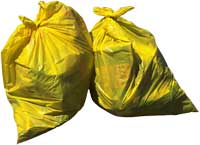From 2010-2013 Worcester has earned a decreasing level of revenue that has dropped by $326,831 throughout these years. Even the city’s proposed budgets have allocated diminishing revenues decreasing $200,000 between 2011 and 2012. Given these trends, one can make a claim that overall trash revenues are decreasing in the city of Worcester. This makes one ask the ‘why’ question. Why are the city’s revenues decreasing in this area? All one needs to do is drive up and down the city streets on trash day and it is obvious that many people are recycling their rubbish with blue and green recyclable bins and being as economic as they can with their precious yellow bags. Perhaps the rubbish trucks need the addition of roll-off dumpster Software? It is obvious that the citizens of Worcester are enthusiastically recycling more than they used to over the years. Therefore, our willingness to be “green” and economically intelligent is actually diminishing expected returns in the annual budget for the city. One hopes, that the city does not have plans to increase the cost of the yellow bags any more in order to maintain revenues in this sector.
The “Pay as you throw” trash system began in 1993 in the city in an effort to offset some of the curbside costs of trash collection. Back in that year the price per bag was .50 cents (or $2.50 for five small bags). Not too many people are going to complain about bags that cost half a buck. But, in 2002, the cost per bag increased, or should one say doubled, to $1 per bag (or $5.00 for five small bags). Okay, one dollar doesn’t sound too bad. Now again, in 2007, the city increased the cost per bag up to $1.50 (or $7.50 for five small bags). Now the price per bag has tripled, yes tripled from its original price in a mere 14 years. Let the murmuring begin if you can remember the good old days of paying .50 cents per bag. Plus, the city has to maintain itself and things like inflation occur annually so the city must keep up with these costs. Blah, blah, blah.
But, if Worcester increased the price of the bags according to the inflationary levels of the years ranging from 1993-2007, (stay with me) then the price per bag should have increased to .62 cents in 2002 and $1.15 in 2007. If there are to be any further increases, staying in line with the inflationary attitudes of the Federal Reserve, then the city should charge no more than $1.72 per bag in 2014 to its citizens. This may sound like ranting and raving from a stark-mad lunatic and cheapskate nonetheless, but the overall increase in every day prices like groceries, gasoline, and energy bills are forcing that lunacy. This point can be explored further with larger and much crazier numbers.
If in 1993 the price of a car was $10,000, then adjusted for inflation in 2002 the price of that car would increase to $12,449. Go online and search inflation and various websites will pop up that will calculate the inflation rates you set between two years. In 2007, that same car would cost $14,348 adjusted for inflation. But, the price of the bags in our city doubled in 1993 and tripled in 2007. If taking that bag price tripling into our same car scenario, the price of the $10,000 vehicle in 1993 would increase to $20,000 in 2002 and $30,000 in 2007. I’d rather pay $14,000 for the car instead of $30,000. This is a price increase of 200%! That’s quite a dramatic increase when used in large numbers. But, the small increase seen in the price of individual bags seems less intrusive.
The snapshot of decreasing revenues in the budget ranging from 2010 to 2013, can lead one to believe that the revenues must also have been decreasing in the years leading up to 2002. Therefore, what is the reason for the increase in bags and why so much? Looking back on the situation, if one were present at the meeting held to increase the cost of the bags, then one would have had greater concern over the new higher prices. If we all could afford to drive Corvettes, buy 93 octane gasoline, and shop at Whole Foods every day, then these price increases would not be much of an issue. But, presently it seems that more people are concerned with the higher price trends in their everyday lives. Making decisions like biking to work, not go to the movies, or buying cheaper substitutes sound like great ways to save cash. Nevertheless, these decisions are not choices since most people do them because there is no alternative.
Where is the trash going? Are the citizens more rubbish savvy and recycling more as the statistics in various articles have described, or are the townies removing their trash in funnier ways than we expected. A garbage survey administered to citizens of Worcester demonstrates that 33% of respondents do not recycle more, while 67% indicated that they have increased their overall level of being green. When it came to the question of what they do with their trash to try to minimize their use of the yellow bags, 33% replied that they do nothing to diminish their rate of yellow bags; 33% stated that they stuff as much as they can into the bags; and 33% wrote that they burn paper trash, recycle the plastic and glass, and visit known dumpsters that will takes non-recyclables. This survey demonstrates that most respondents increased their overall recycling habits, while some did not change from their previous habits. Also, people are finding alternative receptacles to bring their trash to in order to reduce their use of those grimacing yellow bags. Hence, it is obvious that most citizens within the city are making an effort to reduce their output of trash.
In the end it is a good thing to reduce one’s own rubbish output and having a smaller carbon footprint on the Earth. There are many ways to achieve a carbon offset, and this is one of them. Our citizens have been introduced to a yellow trash bag system that has altered our habits for the good of the city and our planet. However, it seems that we could still be making this wonderful step forward with trash bags that cost less than they are today. Let’s hope that there are no further price increases on our precious yellow bags. Their price increase from 2002 to 2007 has tripled from the original price so there should not be any legislation passed in the near future to increase our costs in this sector. And don’t forget: they don’t take Styrofoam.
Written by:
Gary Placek


